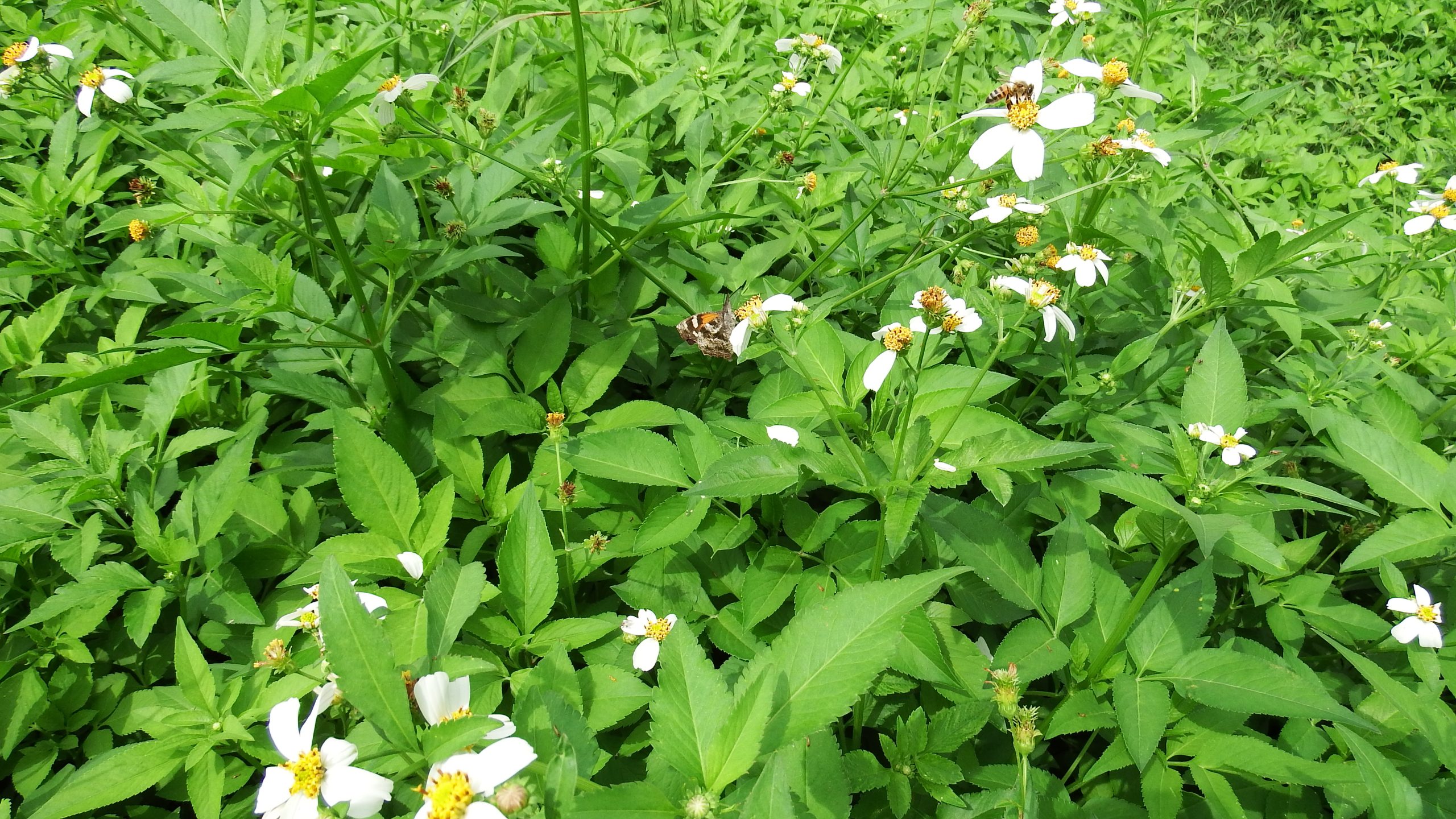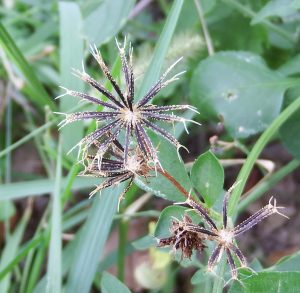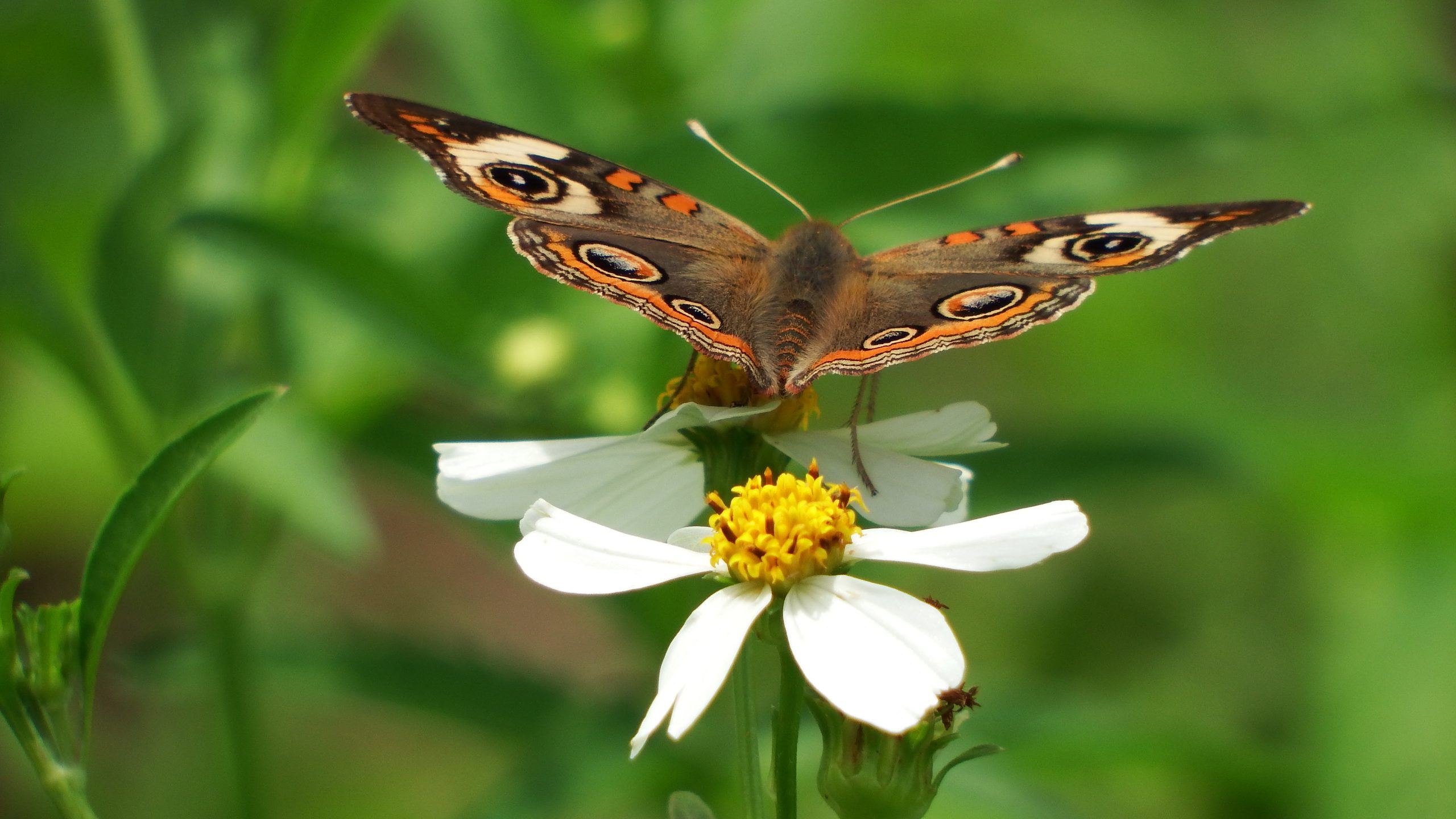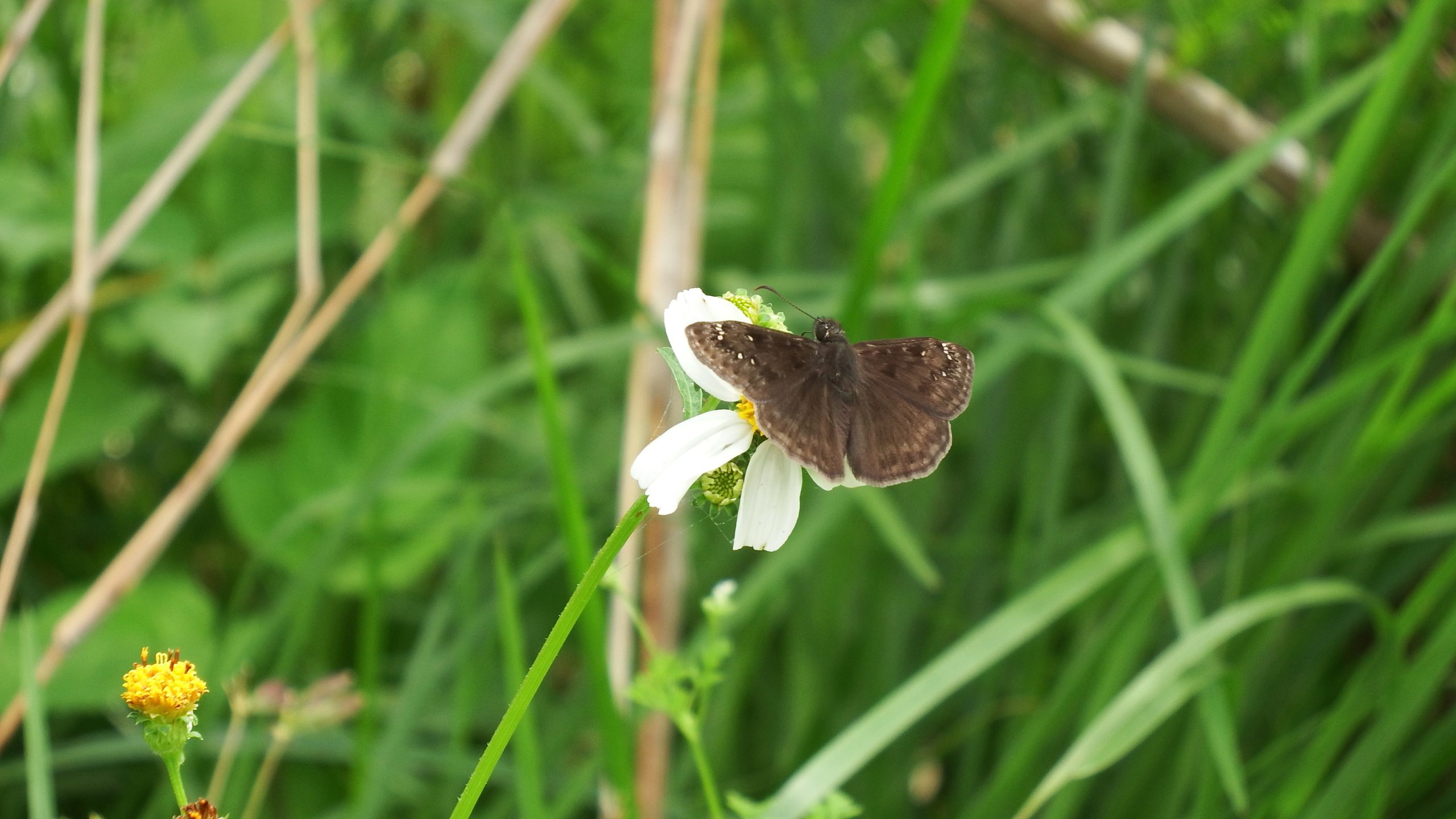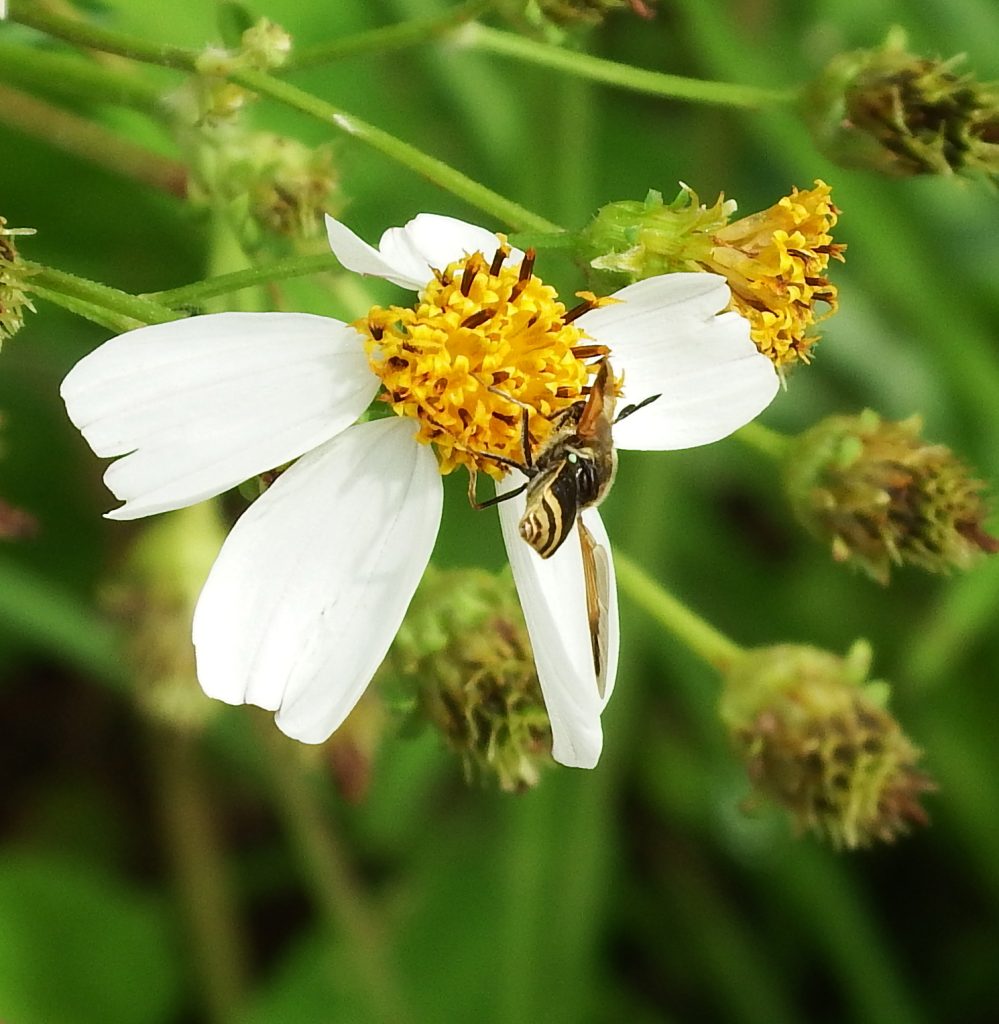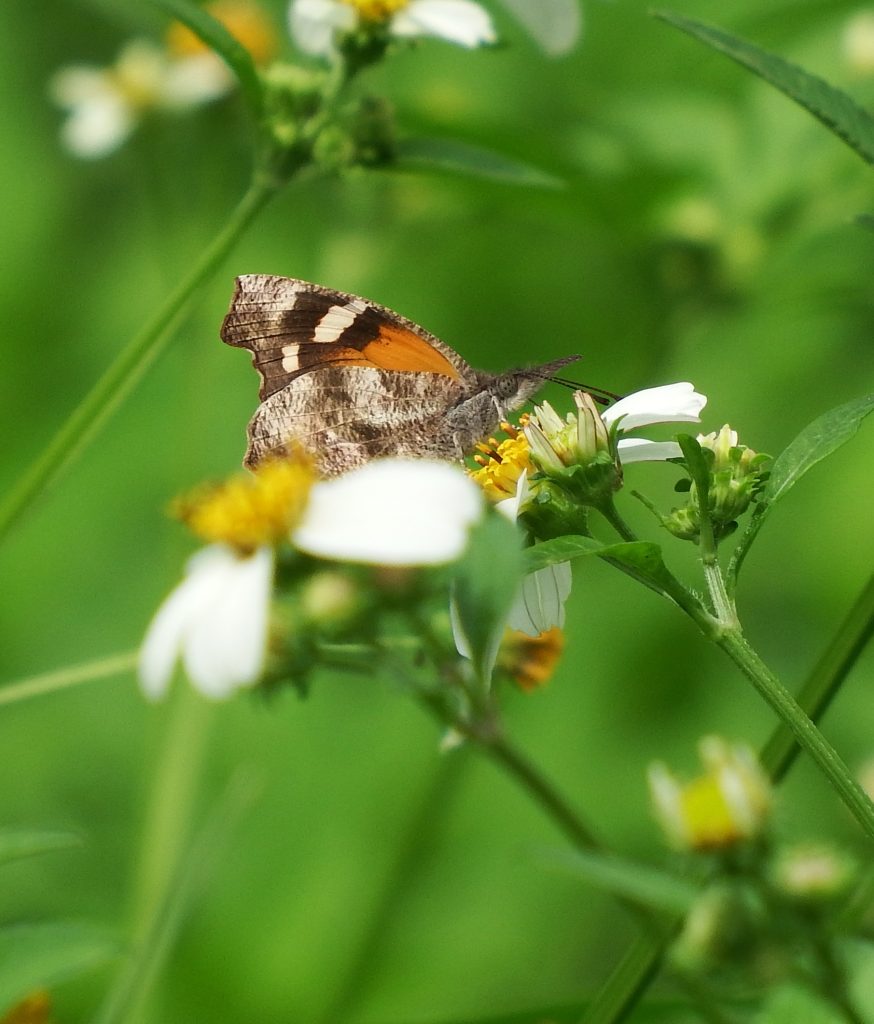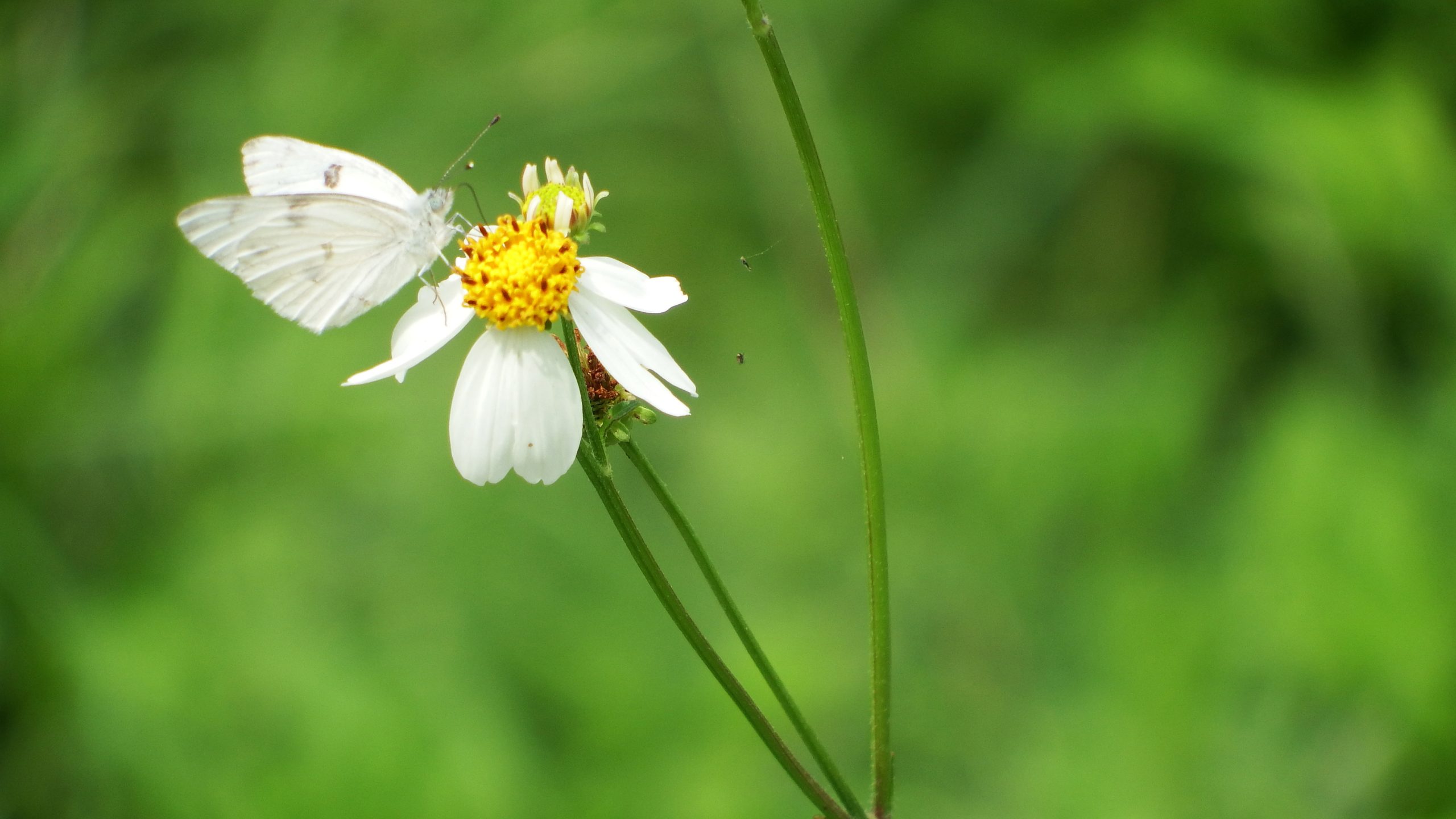Seeds of a blog post
If you are in Buffalo Bayou Park looking for butterflies, find a stand of Bidens alba and stay there. Every butterfly in the park will stop by for a visit. Because of this, Bidens alba is one of my favorite plants. It’s no show-stopper. You’ve undoubtedly seen it; in summer months, it is ubiquitous. If you’ve thought about it at all, you probably thought it was some kind of daisy.
When I started this blog, I knew I would write about Bidens alba, but I didn’t think I was going to write about it today. I was going to wait until the Park was full of it. But, apparently, I am not in charge of this blog, the Park is. I had my own ideas for this post, but after poking around some less-trafficked spots, nothing I was hoping to see presented itself. Disappointed, I went home to find that my pants had been attacked by a tiny porcupine. Quills sticking out everywhere. Bidens alba strikes again!
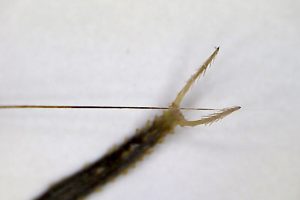
Bidens alba seed, magnified 35X with cat hair (of which I have an abundant supply) for size reference.
The common names for Bidens alba are shepherd’s needle and beggar’s tick. That’s about the seeds, not the flowers. In fact, the whole genus is named for those seeds. Bidens is Latin for “two teeth.” Alba (which is the species, by which we can differentiate our Bidens from the 200 or so other Bidens around the world) is Latin for “white.” The teeth in question are not on the flower, they are on the seed. I still didn’t plan on writing about this, but I had never opened that digital microscope I bought because it was just bound to come in handy sometime. Well, that time is now!
I introduce you to Bidens alba! Those two “teeth” poke into whatever passes by, the tiny backward-facing barbs make sure the seeds stick to your socks, pants, and dog. Technically, those teeth are awns. And it’s thanks to them that we have Bidens alba here at all. It is native to Florida, where it is considered something of a pest. Seems, some people like walking outside without getting covered in tiny seeds.
Because it is so readily transported by anything that passes by, Bidens alba has spread through most of the southern tier of the U.S. Anywhere warm enough and wet enough, Bidens alba has set up shop.
Usually, I am not going to sing the praises of a non-native and dare we say ever so slightly invasive species, but I will not hear a harsh word against this plant. Every bee and butterfly in the Park can’t be wrong.


